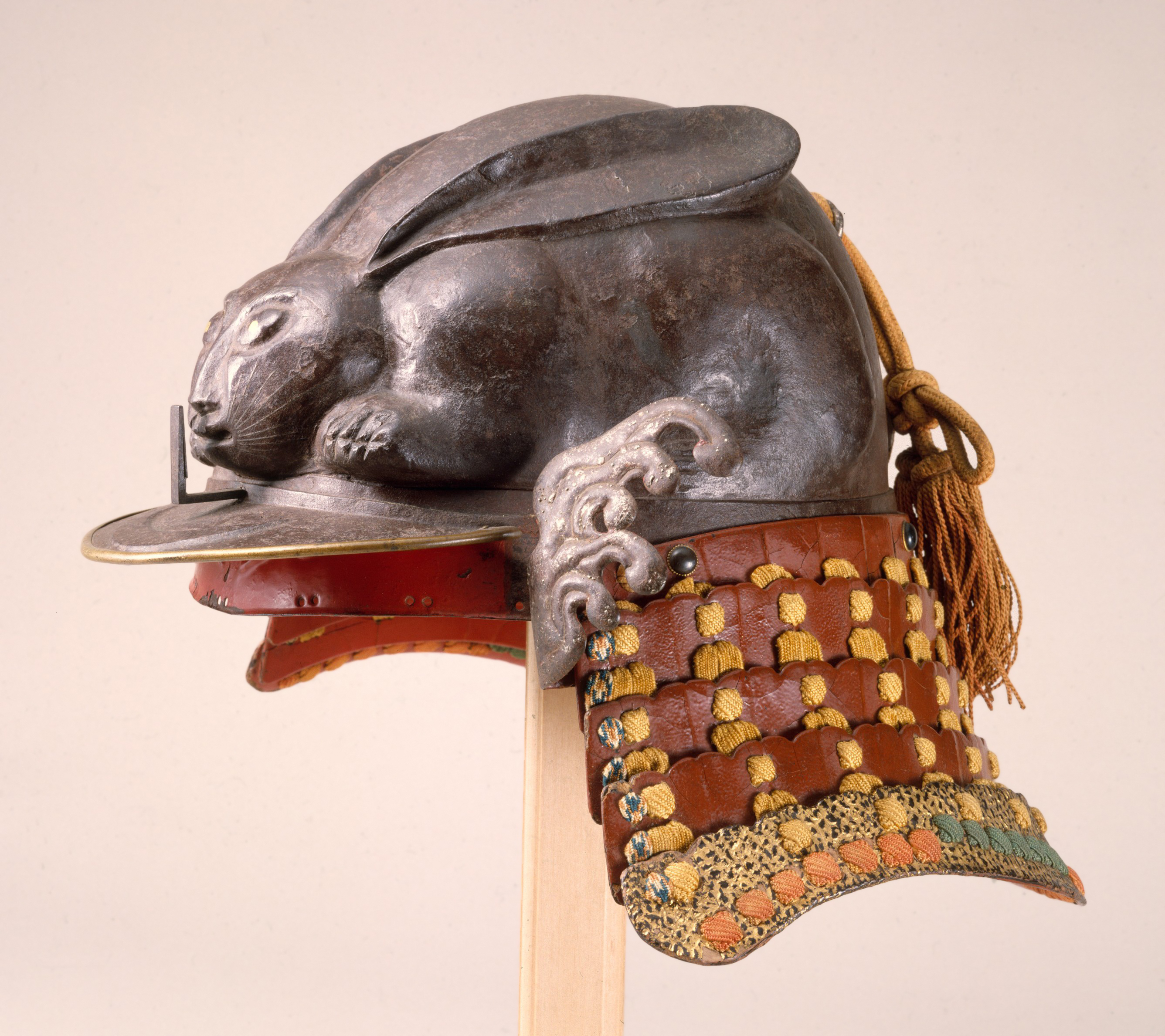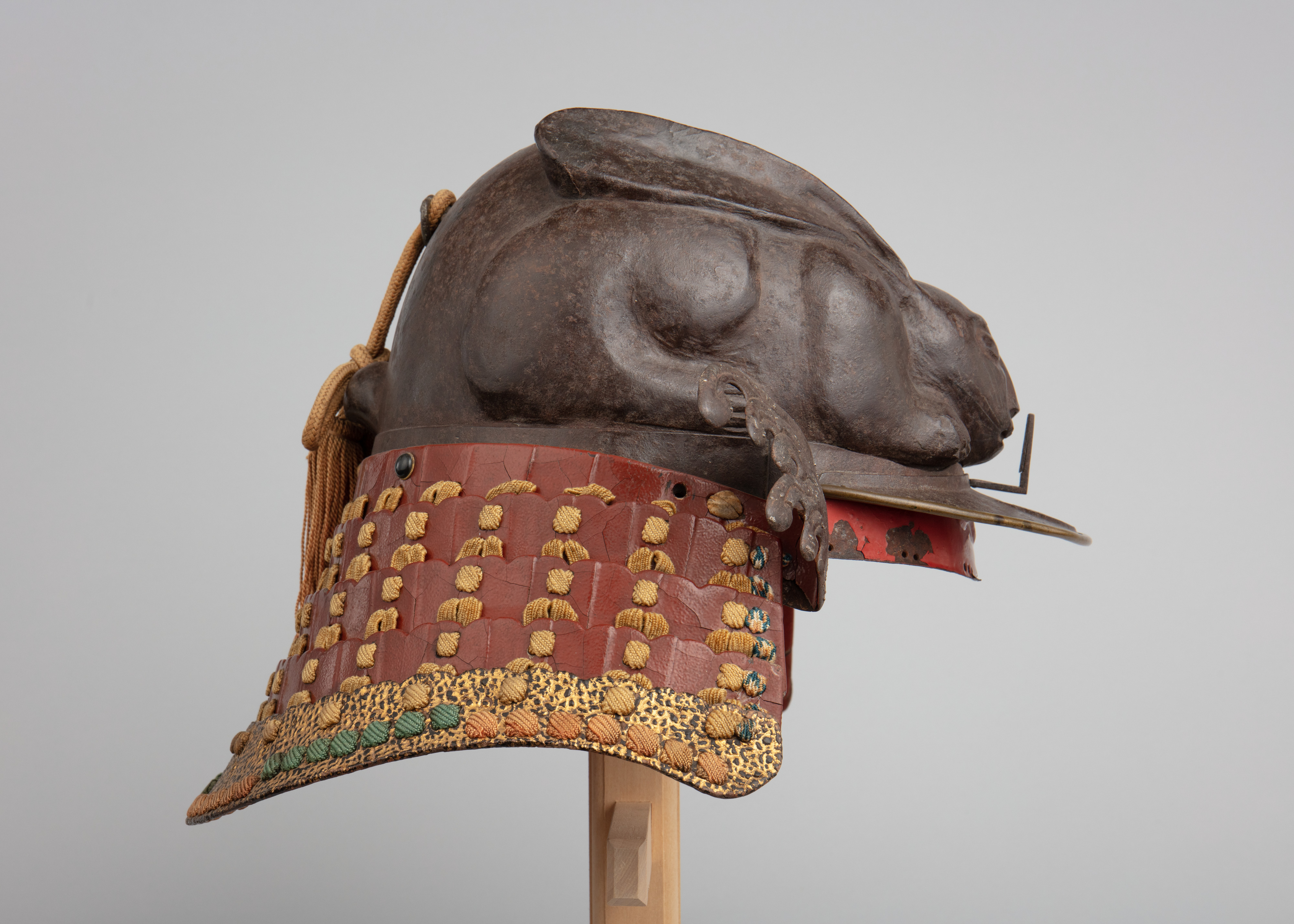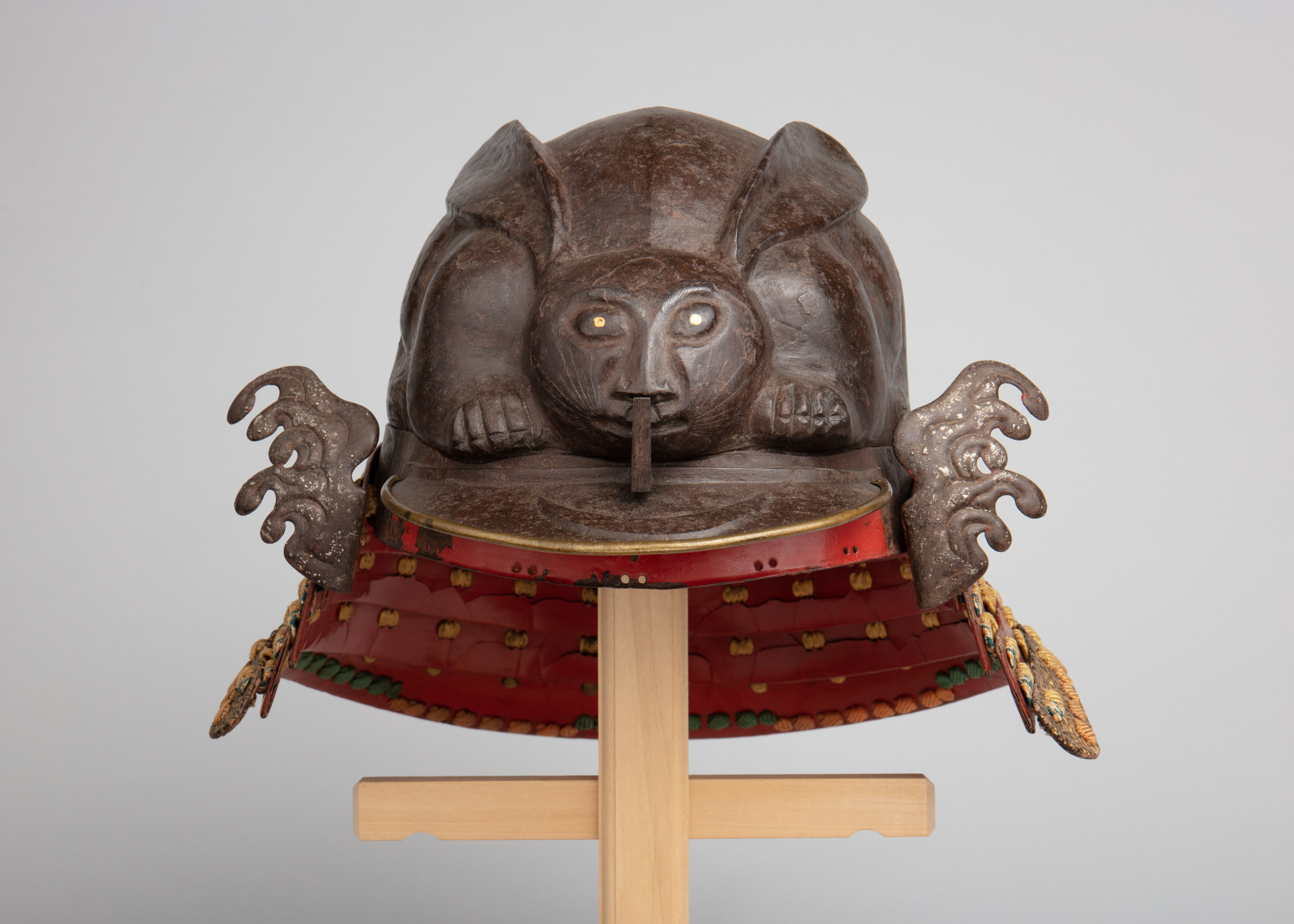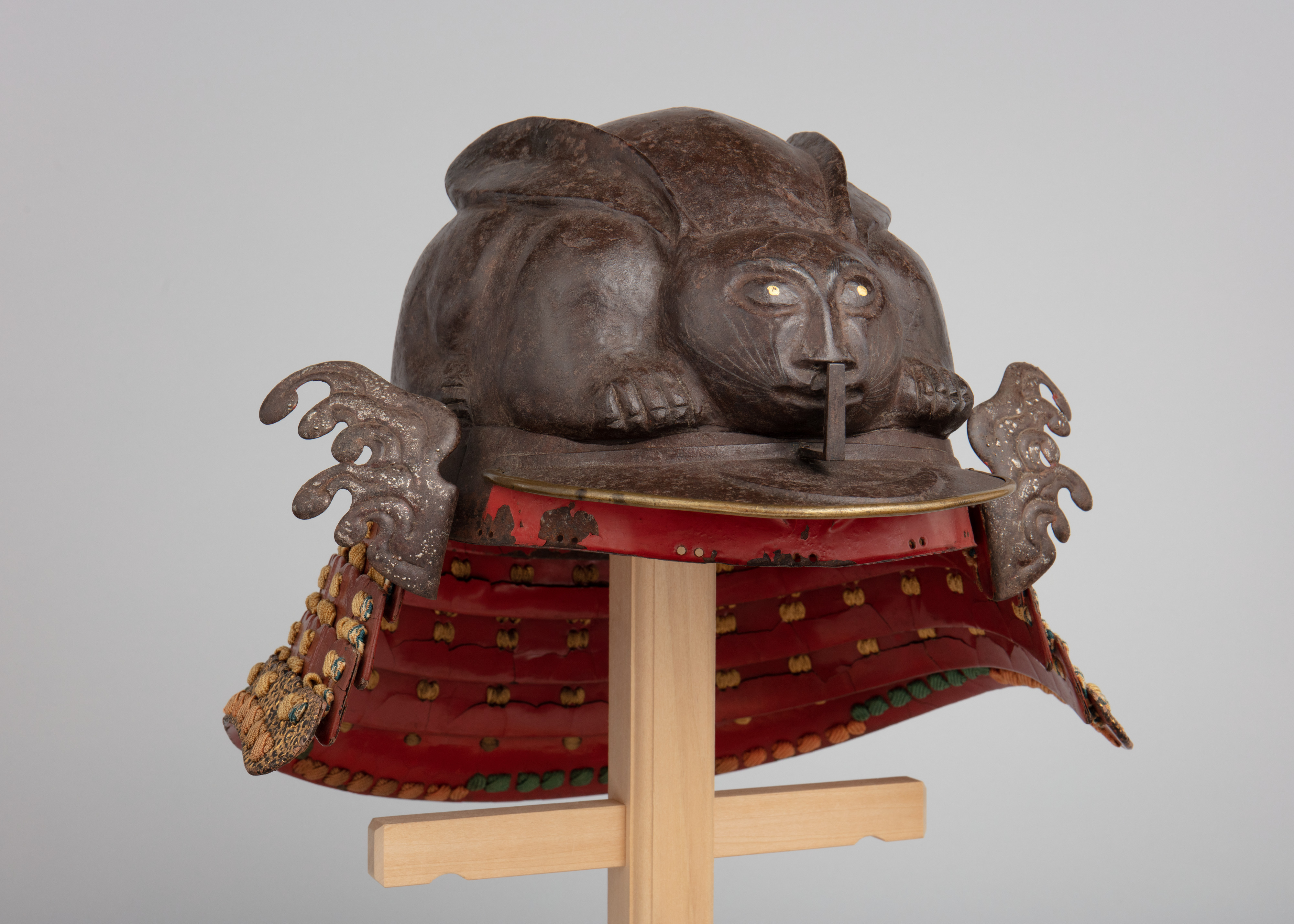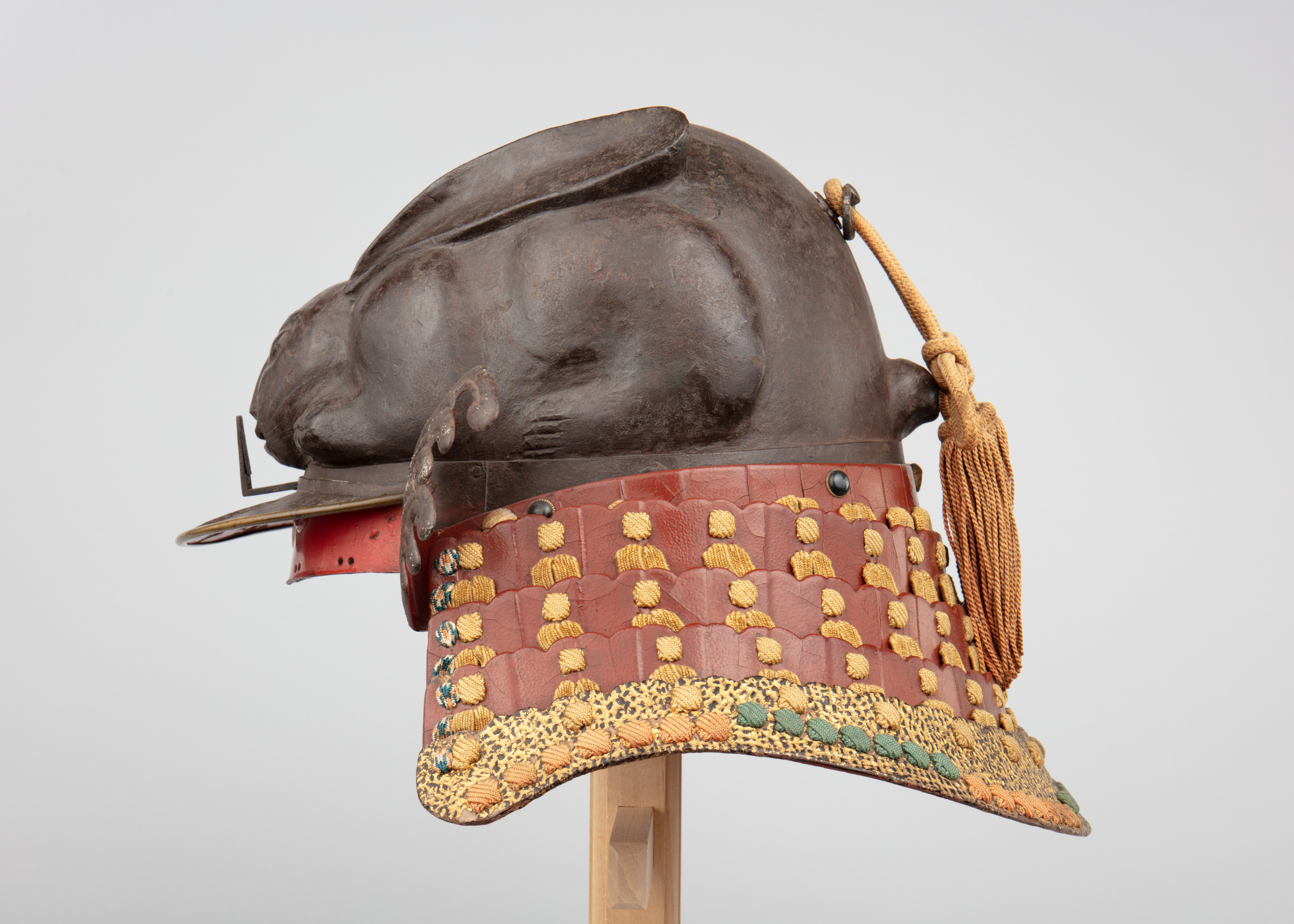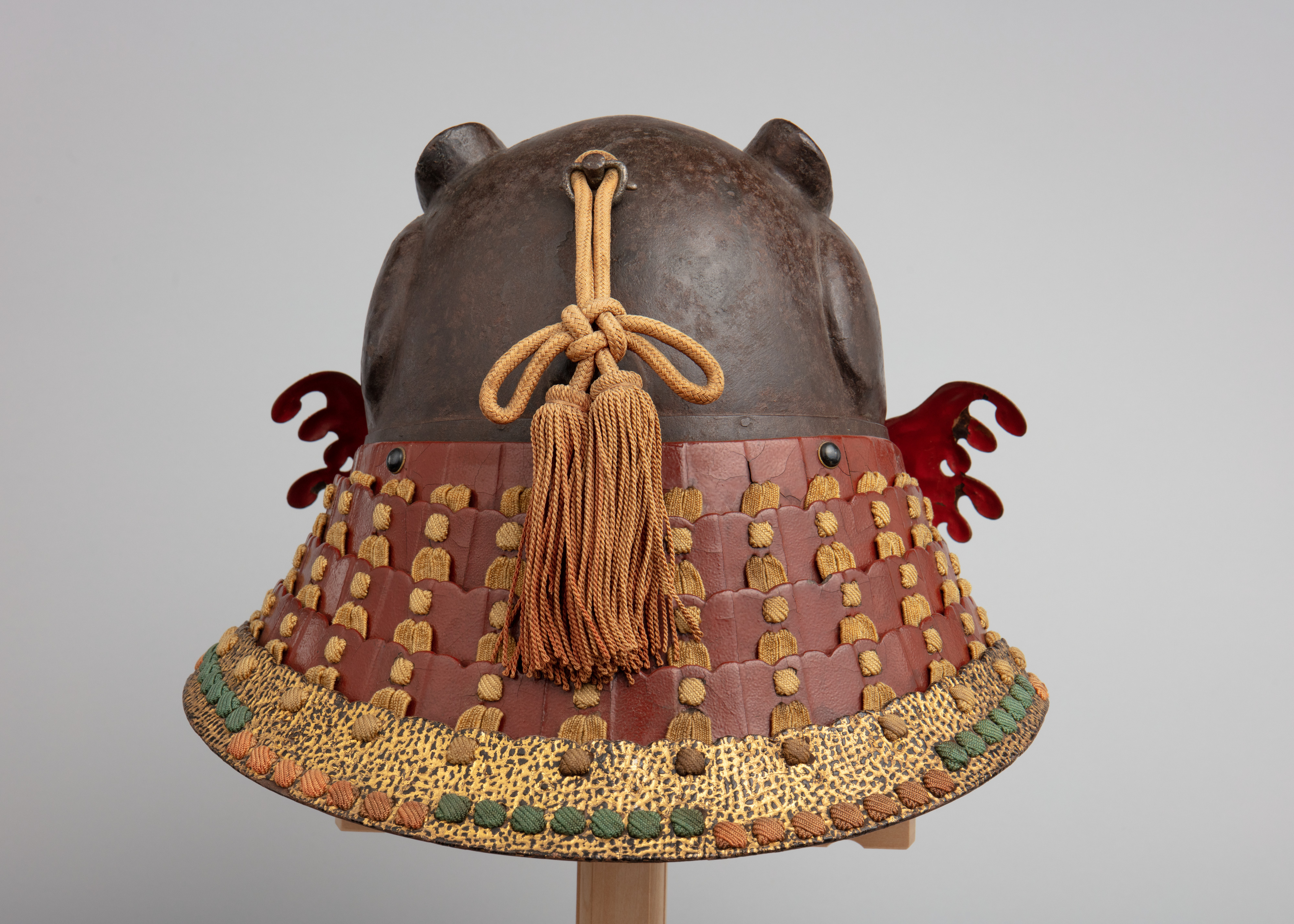Helmet in the Shape of a Crouching Rabbit
The sixteenth century marked a period in Japanese history that was disrupted by political upheavel, warlordism, and near constant military conflicts, bringing significant changes in the way battles were fought. One such change was the employment of armies that were larger than ever before, a fact which also increased the number of participating units. Thus, the use of standards, banners, and any form of identifier became essential. Higher ranking samurai also wanted to stand out so that their military achievements would be noticed on the battlefield. This trend gave rise, i.a., to the highly individualized helmet form of the kawari-kabuto.
The entire cranial portion of this kawari-kabuto is made from one piece of iron and shaped to represent a crouching rabbit, a technique referred to as ichimai-uchidashi. The unlacquered iron is beautifully contrasted with a neckguard (shikoro) of four rows, three of which are lacquered red, and with the bottom row being covered in gilded leather.
Kawari-kabuto designs can draw from nature, religion, geography, or myths and legends. In choosing the motif of his kawari-kabuto helmet, a samurai made a statement, which in turn needed to be understood by both his allies and enemies. Here, the ear guards (fukigaeshi) are shaped as waves, which in combination with the rabbit alludes to the Noh play Chikubushima––a reference an educated samurai would have understood immediately, informing him about the educated mind of his opponent as well.
Chikubushima is about the retainer of an emperor who travels to Lake Biwa in order to pray at a famous shrine on Chikubushima Island. When the ferry reaches the island, the courtier recites in praise of the scenic beauty the following lines: “Reflections of green trees sink down, and fishes climb their branches; the moon dives beneath the lake, and the rabbit of the moon sports upon the waves.” (1)
(1) Tyler, Royall. "Buddhism in Noh.” Japanese Journal of Religious Studies, vol. 14, no. 1, 1987, pp. 19–52. JSTOR, www.jstor/stable/30234528
#9757. Helmet in the Shape of a Crouching Rabbit
This image cannot be enlarged, viewed at full screen, or downloaded.
This artwork is meant to be viewed from right to left. Scroll left to view more.


